Generating translations from the model
Machine Translation with Keras

Thushan Ganegedara
Data Scientist and Author
Previous model vs new model
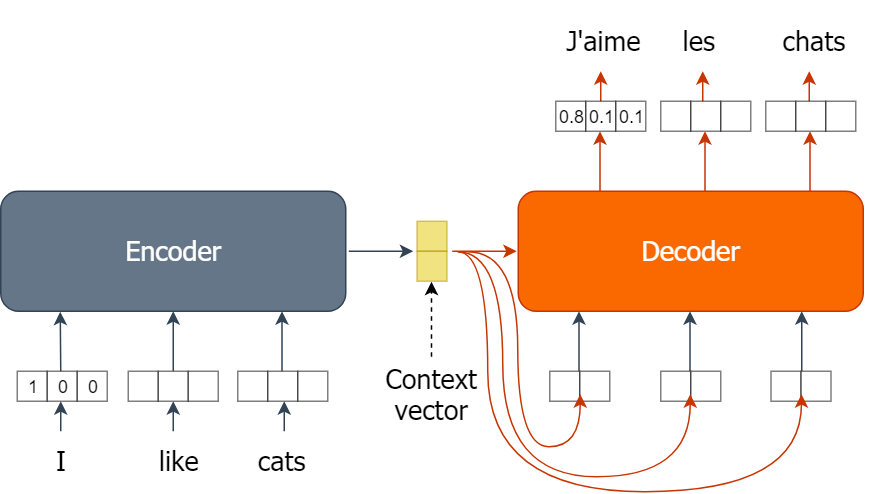
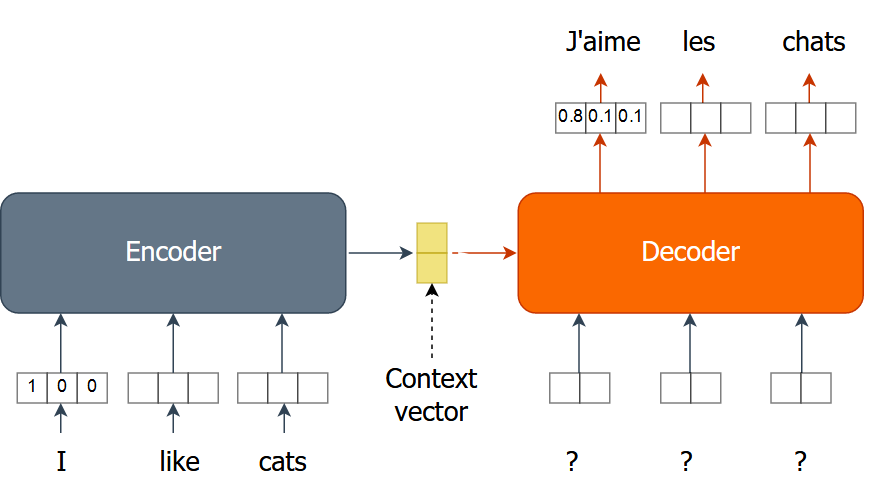
Trained model
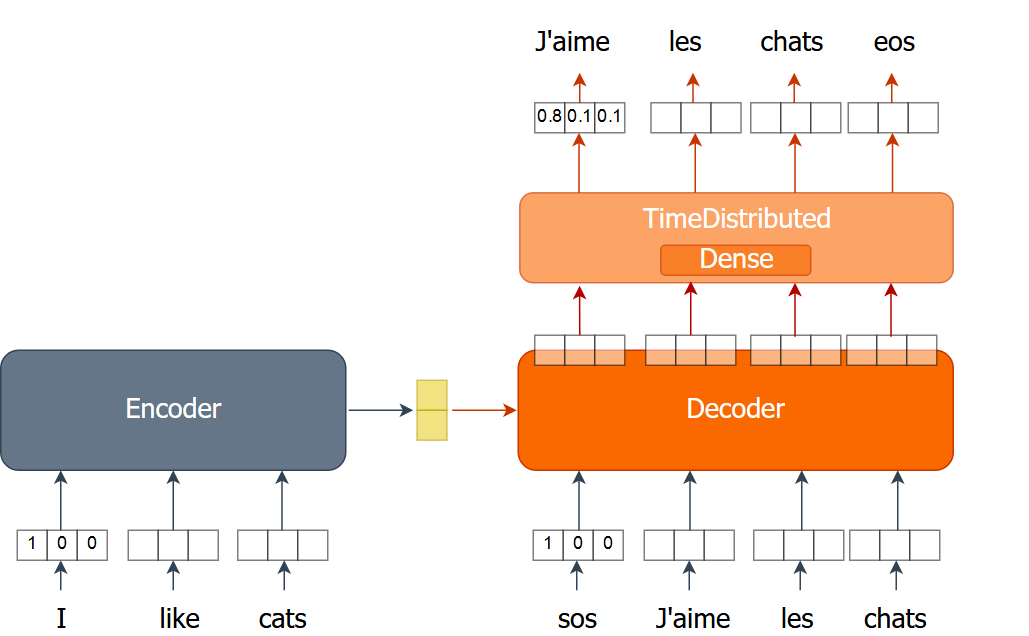
Decoder of the inference model
Takes in
- A onehot encoded word
- A state input (gets the state from previous timestep)
Produces
- A new state
- A prediction (i.e. a word)
Recursively feed the predicted word and the state back to the model as inputs
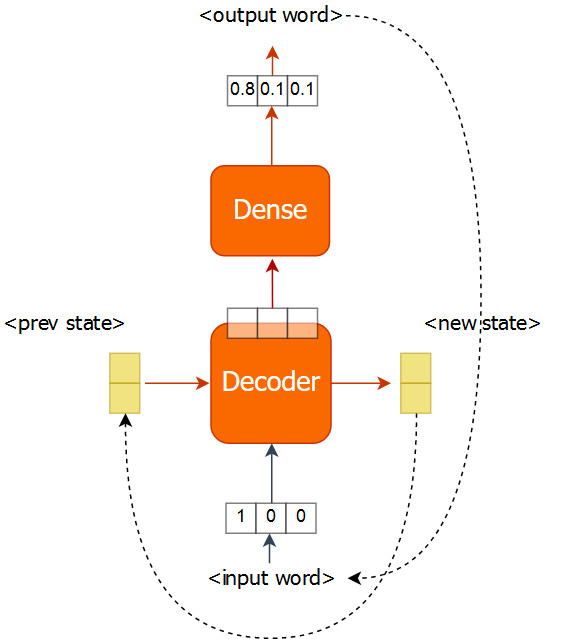
Full inference model
- Inference model with the recursive decoder
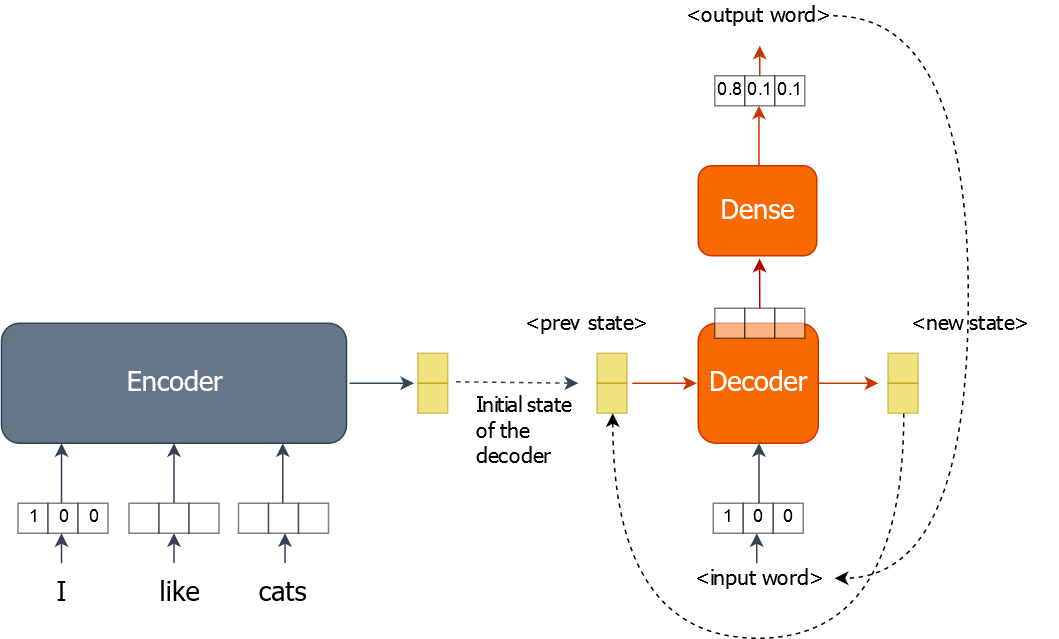
- Inference model from the previous chapter
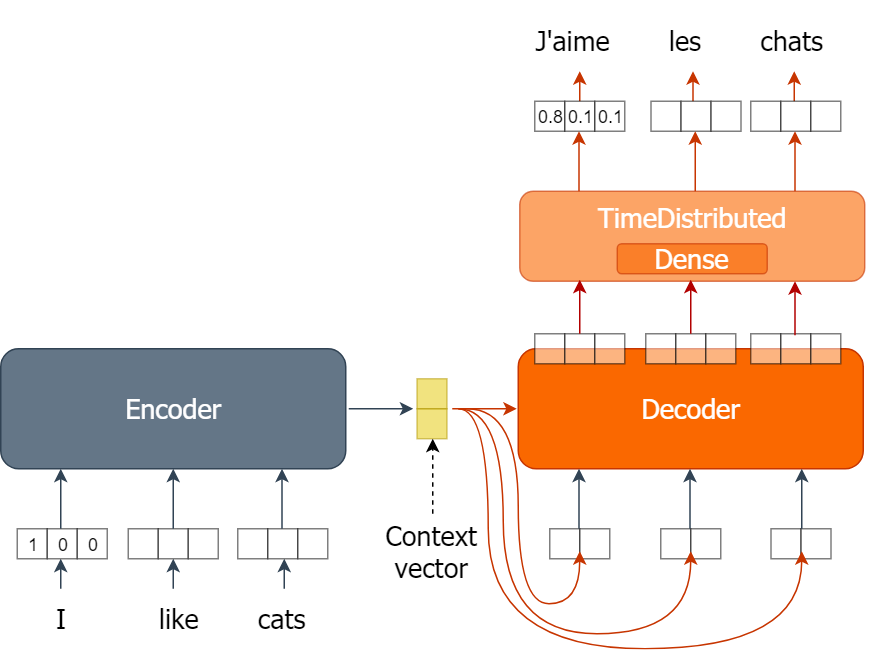
Value of sos and eos tokens
sosmarks beginning of a translation (i.e. a French sentence).- Feed in
sosas the first word to the decoder and keep predicting
- Feed in
eosmarks the end of a translation.- Predictions stop when the word predicted by the model is
eos
- Predictions stop when the word predicted by the model is
As a safety measure use a maximum length the model can predict for
Defining the generator encoder
Importing layers and Model
# Import Keras layers import tensorflow.keras.layers as layers from tensorflow.keras.models import ModelDefining model layers
en_inputs = layers.Input(shape=(en_len,en_vocab)) en_gru = layers.GRU(hsize, return_state=True) en_out, en_state = en_gru(en_inputs)Defining
Modelobjectencoder = Model(inputs=en_inputs, outputs=en_state)
Defining the generator decoder
- Defining the decoder
Inputlayers
de_inputs = layers.Input(shape=(1, fr_vocab))
de_state_in = layers.Input(shape=(hsize,))
- Defining the decoder's interim
layers
de_gru = layers.GRU(hsize, return_state=True) de_out, de_state_out = de_gru(de_inputs, initial_state=de_state_in)de_dense = layers.Dense(fr_vocab, activation='softmax') de_pred = de_dense(de_out)
- Defining the decoder
Model
decoder = Model(inputs=[de_inputs, de_state_in], outputs=[de_pred, de_state_out])
Copying the weights
- Get weights of the layer
l1w = l1.get_weights()
- Set the weights of the layer
l2withwl2.set_weights(w)
- In our model, there are three layers with weights
- Encoder
GRU, DecoderGRUand DecoderDense
- Encoder
en_gru_w = tr_en_gru.get_weights()
en_gru.set_weights(en_gru_w)
Which can also be written as,
en_gru.set_weights(tr_en_gru.get_weights())
Generating translations
en_sent = ['the united states is sometimes chilly during
december , but it is sometimes freezing in june .']
- Converting the English sentence to a sequence
en_seq = sents2seqs('source', en_st, onehot=True, reverse=True)
- Getting the context vector
de_s_t = encoder.predict(en_seq)
- Converting "sos" (initial word to the decoder) to a sequence
de_seq = word2onehot(fr_tok, 'sos', fr_vocab)
Generating translations
fr_sent = ''for _ in range(fr_len): de_prob, de_s_t = decoder.predict([de_seq,de_s_t])de_w = probs2word(de_prob, fr_tok)de_seq = word2onehot(fr_tok, de_w, fr_vocab)if de_w == 'eos': break fr_sent += de_w + ' '
Time to translate!
Machine Translation with Keras

